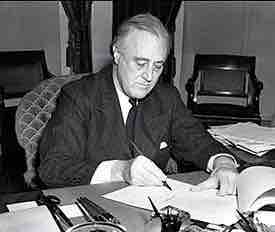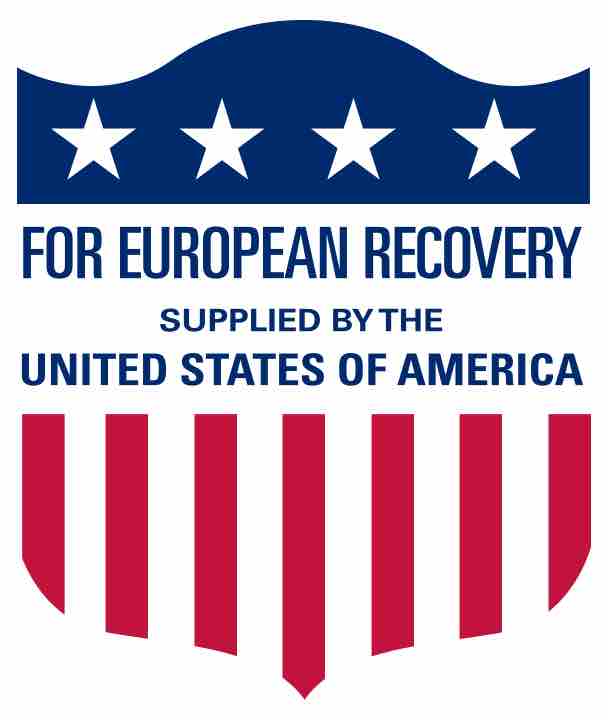Abandoning Isolationism
As the world was quickly drawn into WWII, the United States' isolationist policies were replaced by more interventionism. In part, this foreign policy shift sprung from Euro-American relations and public fear.
On September 1, 1939, Germany invaded Poland; Britain and France subsequently declared war on Germany, marking the start of World War II. In an address to the American People two days later, President Roosevelt assured the nation that he would do all he could to keep them out of war. However, even though he was intent on neutrality as the official policy of the United States, he still echoed the dangers of staying out of this war. He also cautioned the American people to not let their wish to avoid war at all costs supersede the security of the nation.
The war in Europe split the American people into two distinct groups: non-interventionists and interventionists. The two sides argued over America's involvement in this Second World War. The basic principle of the interventionist argument was fear of German invasion. By the summer of 1940, France had fallen to the Germans, and Britain was the only democratic stronghold between Germany and the United States. Interventionists feared that if Britain fell, their security as a nation would shrink immediately. A national survey found that in the summer of 1940, 67% of Americans believed that a German-Italian victory would endanger the United States, that if such an event occurred 88% supported "arm[ing] to the teeth at any expense to be prepared for any trouble", and that 71% favored "the immediate adoption of compulsory military training for all young men".
Ultimately, the ideological rift between the ideals of the United States and the goals of the fascist powers is what made the core of the interventionist argument.
Moving Towards War
As 1940 became 1941, the actions of the Roosevelt administration made it more and more clear that the United States was on a course to war. This policy shift, driven by the President, came in two phases. The first came in 1939 with the passage of the Fourth Neutrality Act, which permitted the United States to trade arms with belligerent nations, as long as these nations came to America to retrieve the arms, and pay for them in cash. This policy was quickly dubbed ‘Cash and Carry.' The second phase was the Lend-Lease Act of early 1941 . This act allowed the President "to lend, lease, sell, or barter arms, ammunition, food, or any ‘defense article' or any ‘defense information' to ‘the government of any country whose defense the President deems vital to the defense of the United States.' He used these two programs to side economically with the British and the French in their fight against the Nazis.

President Roosevelt signing the Lend-Lease Act
The Lend Lease Act allowed the United States to tip-toe from isolationism while still remaining militarily neutral.
Policies of Interventionism
After WWII, the United States took a policy of interventionism in order to contain communist influence abroad. Such forms of interventionism included giving aid to European nations to rebuild , having an active role in the UN, NATO, and police actions around the world, and involving the CIA in several coup take overs in Latin America and the Middle East. The US was not merely non-isolationist (i.e. the US was not merely abandoning policies of isolationism), but actively intervening and leading world affairs.

Marshall Plan and US Interventionism
After WWII, the US's foreign policy was characterized by interventionism. For example, immediately after the end of the war, the US supplied Europe with monetary aid in hopes of combating the influence of communism in a vulnerable, war-weakened Europe. This label was posted on Marshall Aid packages.